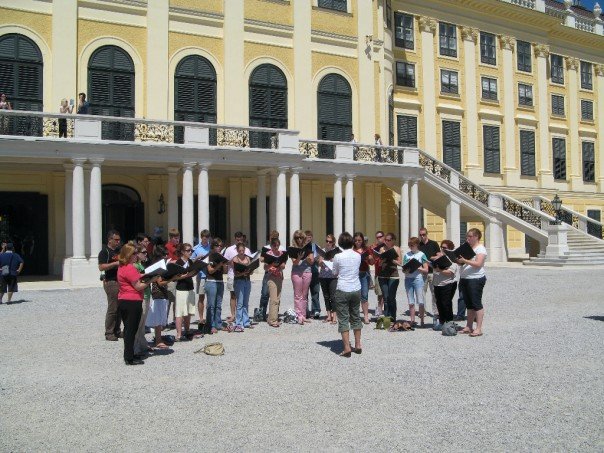A Day with Alice Parker
 Recently, I had the opportunity to attend a choral workshop in western Massachusetts with Alice Parker. The soft-spoken, grey-haired woman dressed in bright colors had the room of 15 attendees mesmerized for two 3-hour sessions. You’d never know she was in her mid-eighties. In addition to reflecting on her experiences (her time at Juilliard and the opportunity to work with the great Robert Shaw), Alice spoke of the qualities that make music powerful and captivating.
Recently, I had the opportunity to attend a choral workshop in western Massachusetts with Alice Parker. The soft-spoken, grey-haired woman dressed in bright colors had the room of 15 attendees mesmerized for two 3-hour sessions. You’d never know she was in her mid-eighties. In addition to reflecting on her experiences (her time at Juilliard and the opportunity to work with the great Robert Shaw), Alice spoke of the qualities that make music powerful and captivating.
We spent the morning singing and improvising folk songs with a focus on accents, melody, and text. Never before have I paid such close attention to the melody! In our Western culture, we place so much emphasis on harmony that the inherent value of the melody is often lost or obscured. Alice states in her book (The Anatomy of Melody, p. xv):
Western music is the only society to list harmony right up there in the trinity of musical greats. But I don’t think it belongs there. If melody (tones) and rhythm (time) are intrinsic to human beings, then harmony is a subset of melody. It is no more on the same level as melody than vertical combinations of rhythmic figures would be equal to rhythm itself. Should we say melody, harmony, rhythm, and polyrhythms?
With this mindset in place, a room of music professionals enjoyed singing elementary-level music in unison. There was freedom and flexibility in the music-making and almost no accompaniment. What better way to teach choral music, especially for children? In the afternoon, we observed a coaching session between Alice and a high school chorus from the area. What incredible insight as to how to truly embody music and communicate its fullest potential. Lastly, Alice focused on departure from the written score and greater reliance on the ear. She also speaks about this in her book (The Anatomy of Melody, p. xxii):
I have come to realize over the years that a healthy mistrust of written music is the only proper starting point. The page doesn’t mean what it seems. It’s only a beginning (sight) not an ending (sound). . . .Does a song you know leap out at you with the immediacy of a remembered voice? Or do the symbols lie obstinately flat on the page with the attendant words similarly meaningless? To understand what I am attempting here, realize that I am trying to balance two antithetical worlds at once–those of eye and ear–and in this case, ear must always triumph not only in notes, but in the written text where a living voice must be sounding for you to begin to respond in kind. And respond, aloud, you must! Sing, argue, affirm, correct–the page does not live until you enter into its dialogue with your ear, voice, and mind.
Image Credit: personal